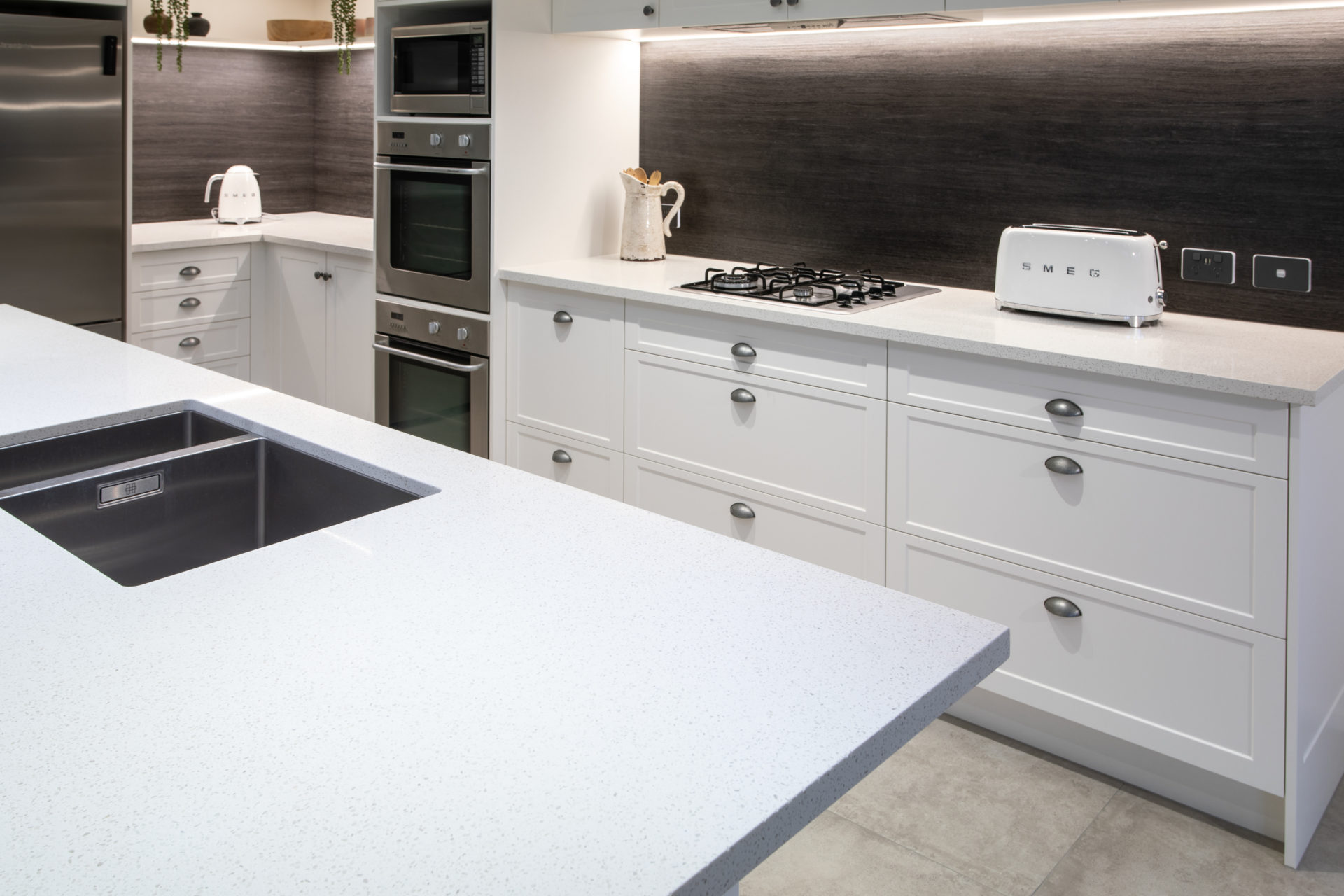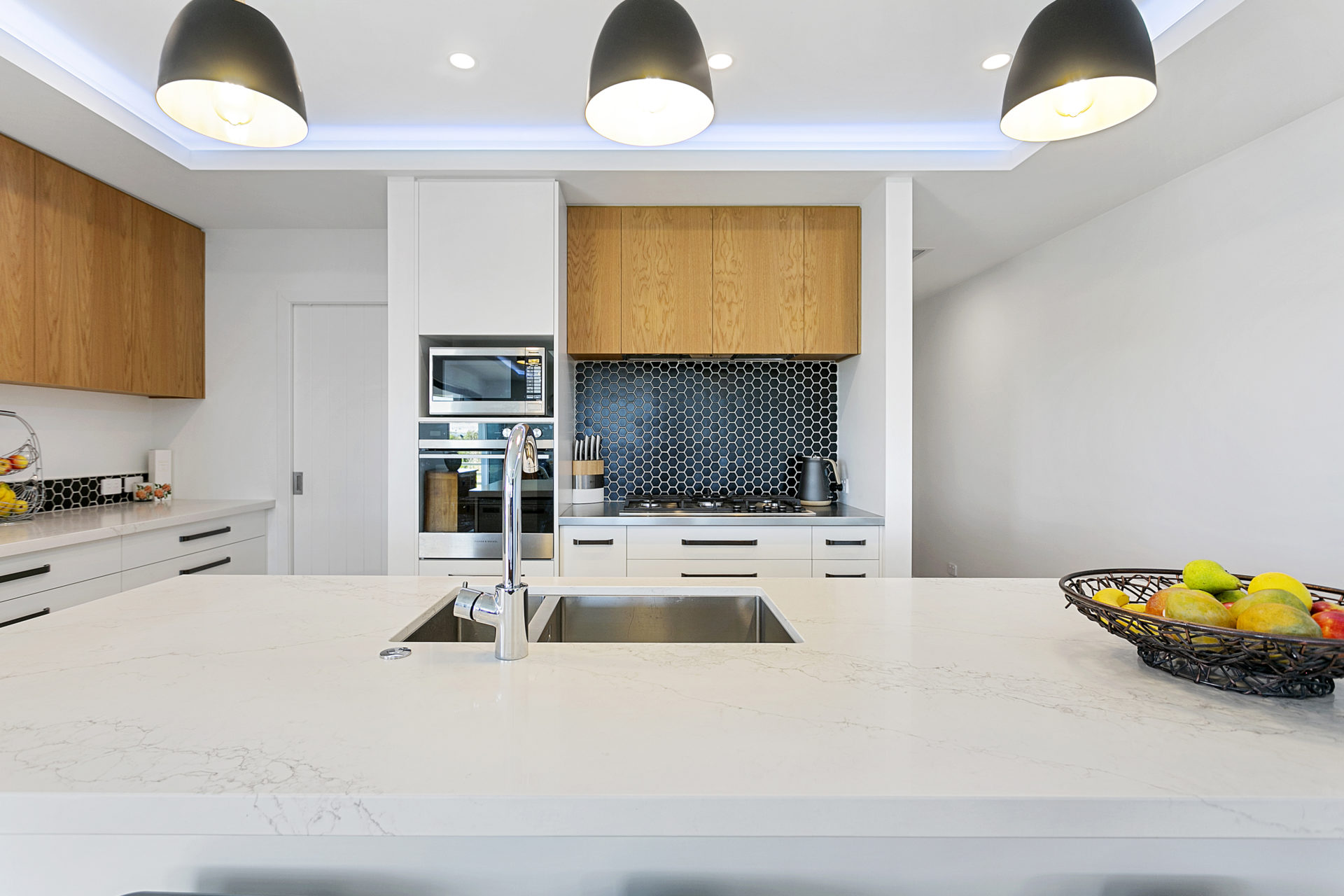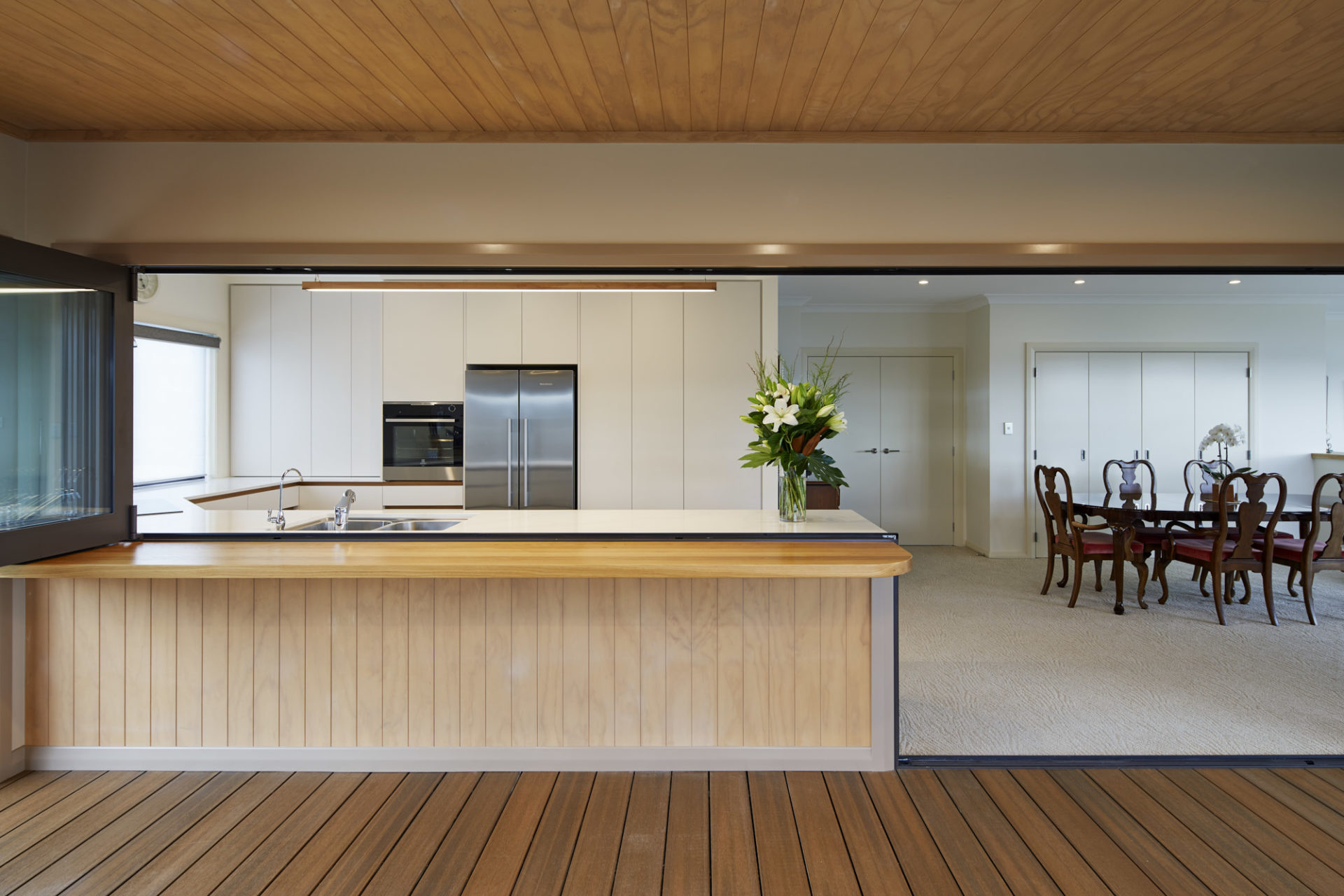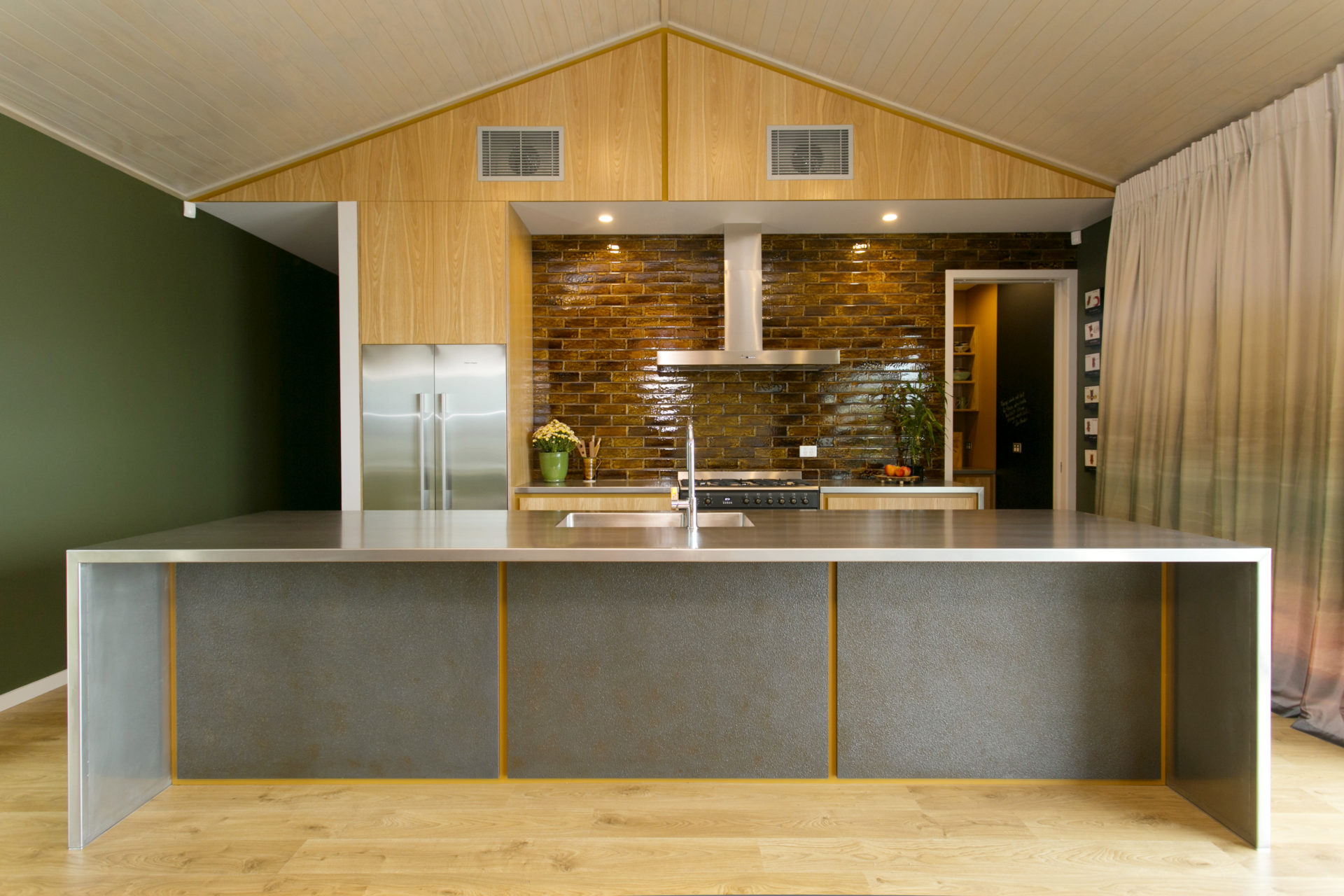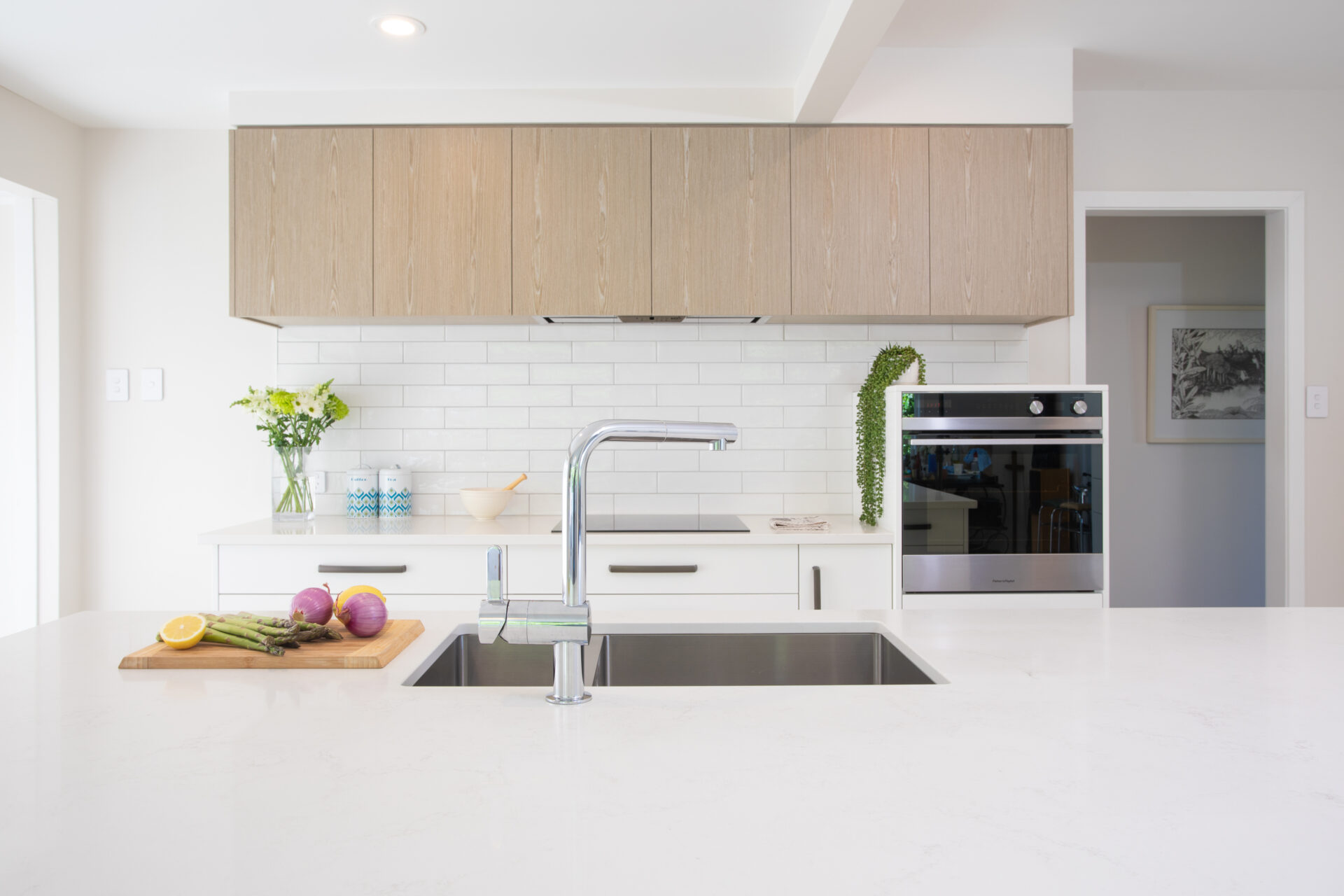KITCHEN CARE
We’ve been creating award-winning kitchen and joinery in Taupo for over 30 years. Ensuring your ongoing satisfaction with the products and service you received is an absolute priority for SMJ.
Upon completion of your kitchen we provide you with a celebratory kitchen care package. This includes:
- Warranty cards for the hardware that we have used in your kitchen. Please read these cards and keep them in a safe place should need them. For your peace of mind, hardware is backed by a lifetime warranty.
- Your complimentary micro fibre cloth and can of Mirotone furniture polish. This polish is designed for natural timber and lacquered surfaces, but is also fantastic on your Melteca and Melamine cabinetry surfaces to give it an even lustre and to keep the kitchen looking great for years to come. Simply wipe down your kitchen cabinetry with a damp cloth, using warm soapy water. Once dry, apply a light spray of the Mirotone polish and buff with a clean dry cloth.
LOVE IT FOR A LIFETIME
For the ongoing care and maintenance of your kitchen, we have a few simple recommendations on how to care for your bench top and kitchen cabinetry surfaces.
The after care of your kitchen is very important to SMJ. If you have any questions or concerns about looking after your kitchen, feel free to contact us and we’ll be happy to provide any necessary advice.
How to care for laminate benchtops
DO NOT PLACE hot pots, pans, electric frying pans and oven trays directly from the hotplate or out of an oven onto the Laminate surface. We always recommend the use of a hot pad or trivet to place hot items onto.
Never place hot pans or appliances over a join in the bench top as it will cause expansion and contraction and will leave a gap.
Avoid scourers and abrasive materials/cloths.
Do not use waxes and polishes, they will dull the natural shine.
Do not cut directly on laminate surfaces.
Don’t place burning cigarettes onto laminate surfaces.
Streaks:
streaky marks sometimes show on dark colours and gloss surfaces after cleaning. Mr Muscle Surface & Glass, or Ajax Spray and Wipe spray cleaners should wipe them away.
Grease:
Clean with soapy water and dry.
Spills:
With accidental spills, you must take prompt action. Wipe off beetroot, grape or berry juices, first aid preparations, concentrated bleach, oven cleaners, dishwasher detergents and artificial dyes or hair colouring immediately.
Scratches:
laminate surfaces will withstand normal wear and tear but can be damaged by scratching or cutting with utensils, knives or unglazed pottery. Darker colours and gloss surfaces will show more scratches more readily than lighter colours.
To minimise scratching, always place and lift objects from the surface – never drag or slide them across the surface.
How to care for for Melteca and Melamine Cabinetry
Never use any of the following abrasive cleaners: Jif, Vim, Ajax, Chemico, Brasso, Oven Cleaners, neat Janola, wire wool, scourer pads, sandpaper.
Cleaning:
Wash down with warm water with a small amount of detergent. For best results use streak free glass cleaner with a soft cloth. For textured finishes (stipple, wood grain, etc) the periodic use of a soft brush may be necessary for the removal of dirt build-ups and residues left by some spray on cleaners.
Spillages:
Hair rinse, Janola (neat) Harpic, oven cleaners – wash with hot soapy water, then wipe dry.
Fabric dye – wash with cold water, then wipe dry. Then apply methylated spirits, and wipe dry.
Battery acid, hydrogen peroxide, glue hardeners – wash with cold water, then wipe dry.
Hair dye – wash with methylated spirits, then wipe dry.
Leather dye – wash with methylated spirits, then wipe dry. Follow with mineral turpentine wash and wipe dry.
How to remove stains and marks from your cabinetry:
Stubborn marks or stains – apply Handy Andy or diluted Janola (1 part to 3 parts water), then wipe don with a warm damp cloth.
Smearing, finger marks, marking from cold or hot dishes, stickiness – apply 1 or 2 applications of acetone (available at pharmacies) and wipe over with dry cloth.
Newsprint – use methylated spirits or mineral turpentine
Rust – use vinegar or lemon juice
Pencil – use water and a damp cloth
Felt pen or dry marker – use methylated spirits or acetone
Paint – use acetone or Duco Lacquer thinners (from a paint shop)
Glue – contact type – use Ados Solvent N (from a paint shop)
Once again, with any of the above use streak free glass cleaner to remove any residues.
How to care for for STAINLESS STEEL
Day to day care:
After use the sink should be wiped with a soft cloth, rinsed and wiped dry. When the mains water is hard, it is particularly important that the steel is wiped dry, as this prevents the build-up of a greyish film discolouration on the steel. Although stainless steel can withstand hard knocks, its surface can be easily scuffed or scratched by hard or sharp objects. This scuffing can look particularly bad when it occurs immediately after installation of the sink. The effect does, however, become uniform with age
and the steel does not lose its attractive sheen.
Cleaning aids:
A soft cloth should always be used on stainless steel. Harsh scouring powders or wire wool cleaning pads should be avoided since both will scuff the sink surface. Furthermore, wire wool pads tend to leave tiny particles of wire wool on the surface of the sink which develops into rust spots. This problem is made worse when these particles adhere to the underside of a plastic washing-up bowl. It should be possible to remove such stains with a damp cloth and Inox cream, but they may be liable to return unless the source is removed. Always remove wet cleaning aids (cloths, containers, etc) from the sink after use to avoid watermarking and rust stains. Always rinse thoroughly after using citrus based cleaners.
What to Avoid
Bleaches
Bleaches containing hypochlorite will attack stainless steel and cause pitting and staining. For this reason, it’s recommended that the sink should not be used for soaking washing in hypochlorite solutions for prolonged periods.
Silver dip cleaners
Silver dip cleaners contain strong acids which attack stainless steel. The first sign of this is rainbow stain which turns dark grey and which cannot be removed.
Foodstuffs
Certain foodstuffs can cause pitting and corrosion. Examples are citric fruit juices, salt, vinegar, mustard, pickles, and mayonnaise. They shouldn’t be left on the surface for prolonged periods.
Acids
Strong acids will attack stainless steel, as will photographic developing liquids or furniture cleaners. In the case of an accident they should immediately be washed away with clean water.
